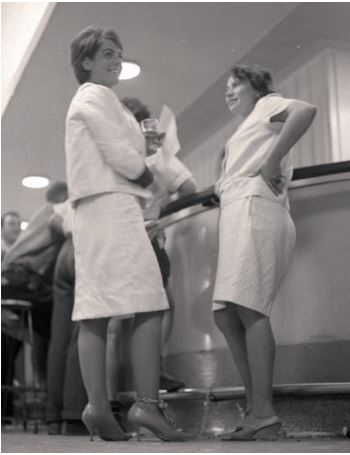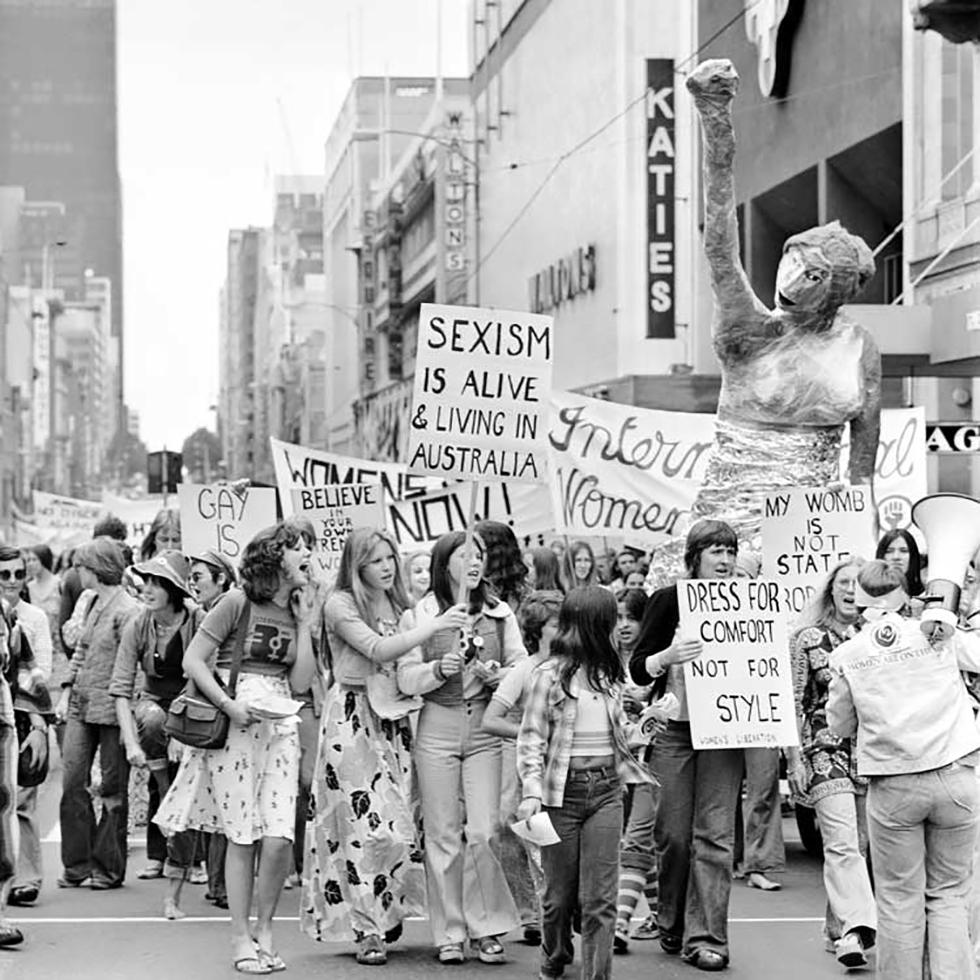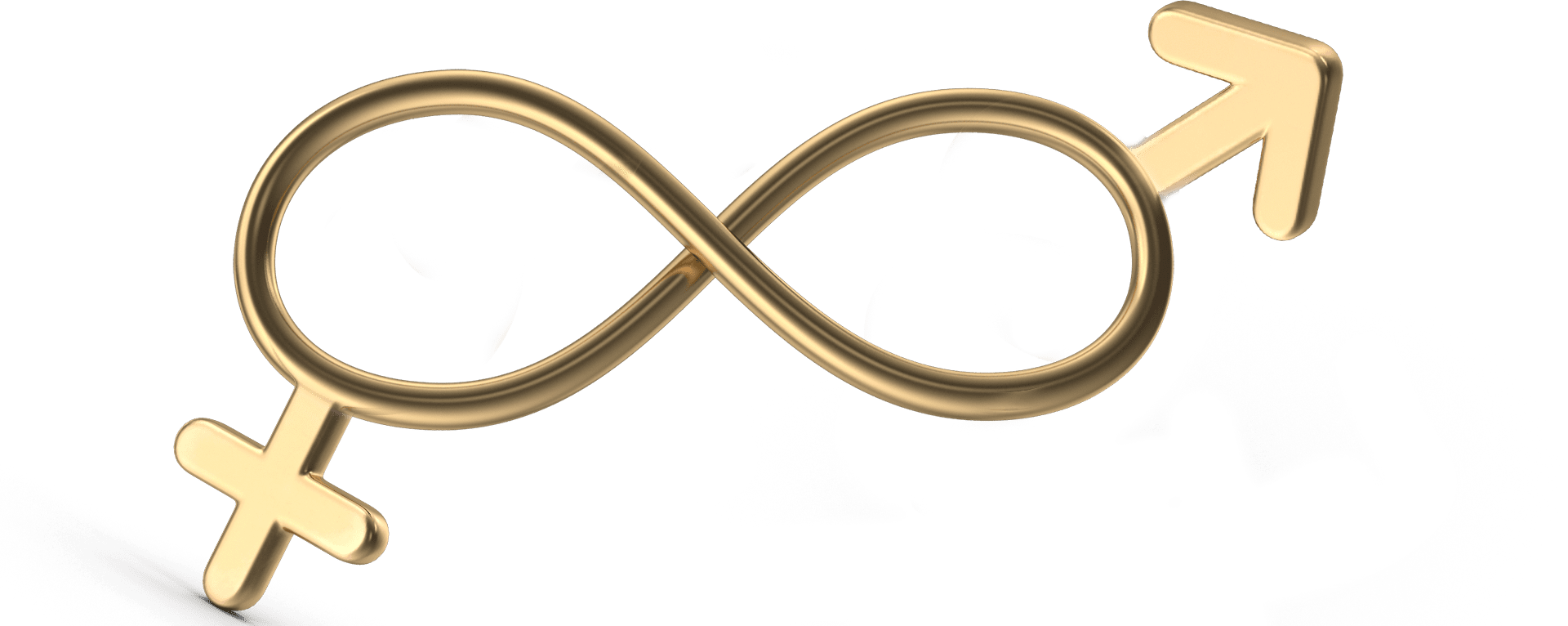
From Suburban Housewives to CEOs: The Evolution of Women’s Rights from the 1950s to the 2020s
In the past seven decades, the rights of women have undergone a remarkable transformation, breaking free from the shackles of societal expectations and discriminatory norms. From the 1950s to the 2020s, women have not only challenged stereotypes but have also demanded and secured their rightful place in every facet of life. In 2024, WGEA will be publishing employer gender pay gaps.
Let’s look at some of the other gender equality differences through the decades in Australia.
1950s – The Era of Suburban Housewives: The 1950s was marked by the image of the idealized suburban housewife, who was expected to find fulfillment solely within the domestic sphere. Legal rights were limited, with many women struggling to secure financial independence. The pay gap was stark, with women’s minimum wage set at 75% of men’s wages.
- “The Marriage Bar” imposed restrictions on women employed in the field of education, preventing them from continuing to teach after getting married. Restrictions were lifted in 1956.
- School education focused on traditional “female” skills in sewing and cooking. Society generally perceived that higher education was wasted on girls as they should pursue their vocation in home-making.

Merle Thornton and Rosalie Bogner chained to the rail of the bar in the Regatta Hotel Brisbane on 31 March 1965. Picture by Bruce Postle RA212-2 pub 1/4/65 The Courier-Mail Photo Archive.
1960s – The Rise of Feminism: The 1960s witnessed the rise of the feminist movement, challenging societal norms and advocating for gender equality. The introduction of the birth control pill in 1960 empowered women to take control of their reproductive rights, paving the way for increased educational and career opportunities. However, the pay gap persisted, and discriminatory laws hindered women’s progress.
- Contraceptive pill became available to women with a prescription and had a 27.5% “luxury” tax.
- Indigenous Australians were given the right to enrol and vote in Federal Elections in 1962.
- Women won the right to drink in a public bar in 1965.
- Women working in public service were no longer forced to resign after getting married in 1966.
- In 1967, Indigenous Australian were recognised as Australian Citizens.
- In 1969, abortions were ruled as legal, based on a woman’s physical and mental wellbeing being in serious danger.
1970s – The 1970s marked significant legal milestones for Australian women. The introduction of the Sex Discrimination Act in 1975 prohibited discrimination on the basis of sex, pregnancy, or marital status. These legal changes aimed to dismantle systemic barriers, fostering a more inclusive society. Many of the changes were effected due to significant campaigning by women’s liberation activities.
- The Bank of New South Wales (now Westpac) became the first bank to grant loans to women without requiring a male guarantor.
- The Women’s Electoral Lobby was formed in 1972.
- In 1972, the “luxury” tax for all contraceptives was abolished and the pill was placed on the National Health Scheme.
- Federal Child Care Act was passed in 1972, providing centre-based day care for children of sick and working parents.
- The Single Mother’s Benefit was introduced in 1972 providing financial assistance to single women who were not eligible to the Widow’s pension.
- In 1973, paid maternity leave became available for Commonwealth Public Servants.
- Elizabeth Reid was appointed as the first Women’s Advisor to the Prime Minister in 1973.
- In 1974, the minimum wage was extended to include women workers.
- Dame Margaret Guilfoyle became the first women to be appointed to a Federal Cabinet as a Minister.
- The Family Law Act in 1975 established the principle of no-fault divorce.
- In 1975, the Racial Discrimination Act passed, making racial discrimination in certain contexts unlawful.

8 March 1975 at the first International Women’s Day rally held in Australia. National Archives of Australia
1980s – Breaking the Glass Ceiling: The 1980s saw more women entering the workforce, challenging traditional gender roles. However, the glass ceiling remained a formidable barrier to women’s advancement into leadership roles. The pay gap persisted, highlighting the need for further progress in workplace equality.
- Married women were no longer required to provide their husband’s authorisation when applying for a passport in 1983.
- In 1984, the Sex Discrimination Act was passed, to ensure women would have equal access to employment, services and accommodation and prohibited sexual harassment.
1990s – Shifting Paradigms: The 1990s witnessed a shift in societal attitudes towards women’s roles. Women began to break into traditionally male-dominated fields, challenging stereotypes and inspiring future generations. However, the pay gap and challenges in achieving work-life balance continued to persist.
- 1999 – Equal Opportunity for Women in the Workplace Act (EEOWA) introduced
2000s – Digital Age and Advocacy: The 2000s ushered in the digital age, providing a platform for women to advocate for their rights on a global scale. Social media became a powerful tool for organizing movements and highlighting issues such as the gender pay gap. The push for gender equality gained momentum, leading to increased awareness and policy discussions.
- 2009 – Australia’s first Paid Parental Leave scheme
- Fair Work Act defines equal pay more broadly as ‘equal remuneration for work of equal or comparable value’
2010s – #MeToo Movement and Corporate Accountability: The #MeToo movement, which gained momentum in the late 2010s, brought attention to issues of sexual harassment and assault, sparking a global conversation about workplace culture. Corporations faced increased pressure to address gender inequality, leading to initiatives promoting diversity and inclusion.
- 2012 – Workplace Gender Equality Act introduced
2020s – Towards Equality: As we step into the 2020s, progress continues but challenges persist. The gender pay gap remains a pressing issue, and women are still underrepresented in leadership roles. Advocacy for equal pay, parental leave, and flexible work arrangements continues to shape the narrative, pushing society towards a more inclusive and equitable future.
From the confines of the 1950s suburban household to the boardrooms of the 2020s, the journey of women’s rights is a testament to resilience, advocacy, and societal evolution. While substantial progress has been made, the fight for true gender equality persists, reminding us that the battle is far from over. As we reflect on the past, let us continue to strive for a future where women’s rights are not just acknowledged but fully realized in every aspect of life.
Resources
